Your Eyes Are the Window to What’s Happening in the Brain
Did you know that by watching eye movement, a professional can determine which area of the brain is injured? By knowing that, they can set a series of eye exercises that will help improve the function of the brain.
Watch as Dr. Burdorf explains the connection between eyes and the way he determines how to help heal from concussion and/or whiplash injuries.
Video Script:
Hi my name is Dr. Mark Burdorf. I’m a board certified chiropractor neurologist in Scottsdale, Arizona. If you’ve been following me and my posts recently I’ve been talking about Right Eye Software and Focus Builder. We do functional neurology here so I want to explain what these therapies are. I use something called Right Eye Software because it measures eye movements.
There are three basic eye movements. The first is called a Pursuit, the second a Saccade, and the last is a Fixation.
Pursuits are when you follow a target with your eyes. That’s a slower movement. When you follow a target and go back to the next target, it’s a Saccade, which is more reflexogenic.
There’s a part of your brain called the Parietal cortex. That’s Pursuits. There’s a part of your brain called the Frontal Lobe, and that’s more Saccades. And then there’s the back part of your brain called the Cerebellum that basically works with your frontal lobe to fixate on an object.
Parietal lobe has to do with more pain and suffering, sensory motor. Frontal lobe has more to do with behavioral stuff. And the cerebellum has a lot to do with balance.
Why is this stuff so important? Well, go ahead and take a hand and put it on the back of your neck, nice and firm. If you follow your other thumb with your eyes back and forth quickly, do you feel your neck muscles move? I do. If you don’t feel your neck muscles move, that’s bad.
We know the brain is sensory motor, and the three things that actually affect balance as well as the tone of your muscles is your eyes, your vestibular system and your cerebellum. It’s not a bad idea to go to the gym and do back exercises. Truly the muscles that hold your spine together are the size of your fingers, and they’re all under the control of these three structures.
Eyes is a visual pathway. Your inner ears is called your vestibulum. There’s horizontal anterior interior/posterior canals. Again, our friend the cerebellum, even though it’s only 10% volume of the brain, it has over 80% of the neurons.
So why is this stuff so important? Well, if you injure your neck in a concussion or a whiplash, these muscles tend to atrophy. We know that basically if you do eye exercises, they coordinate with your deep intrinsic neck muscles.
What you’re seeing here right now is that I’m doing a diagonal micro-saccade exercise. The patient is doing a pursuit back up to the left and then he’s going to work his way back down to the right. That exercise right there is specific for strengthening your neck and back muscles.
We use the Right Eye Software to determine what is not working right. Are your Pursuits, your Saccades, or your Fixations not working correctly? The cool thing is if they’re not, we can assess you and give you an exercise and then reassess you in 7-10 days.
If you want to learn more about my practice, just follow me on Instagram @drmarkburdorf. You can also follow me at drburdorf.com. I also have a YouTube channel Dr. Mark Burdorf Channel.
